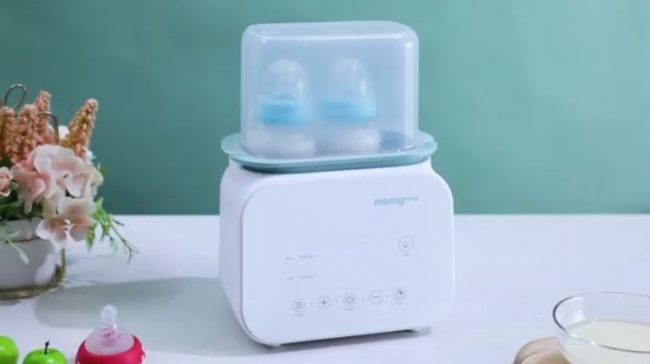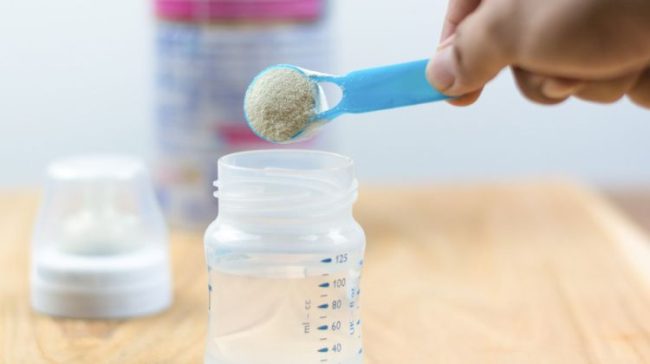As a parent, one of the most important tasks is ensuring the safety and well-being of your baby. With bottles being a crucial part of their daily routine, it is vital to maintain their cleanliness and hygiene. This is where a baby bottle sterilizer comes in.
A sterilizer is a device that uses heat and steam to eliminate any harmful bacteria or germs from your baby’s bottles, pacifiers, and other feeding accessories. With a plethora of options available in the market, choosing the right sterilizer for your little one can be overwhelming.
This comprehensive buying guide aims to provide you with all the necessary information to make an informed decision when it comes to purchasing the right baby bottle sterilizer. From different types and features to considerations and tips, this guide will equip you with the knowledge to choose the best sterilizer that fits your needs and budget.
Types of Baby Bottle Sterilizers
1. Electric Steam Sterilizers
- Convenience and Speed: Electric steam sterilizers are popular for their speed and convenience. They use steam to kill bacteria and other harmful microorganisms efficiently.
- Ease of Use: These sterilizers often come with user-friendly controls, making them simple to operate for busy parents.
- Capacity: Consider the capacity of the sterilizer, ensuring it can accommodate the number of bottles and accessories you’ll need to sterilize.
Pros: Quick sterilization process, easy operation, and automatic shut-off features for safety.
Cons: May have a higher upfront cost compared to other types.
2. Microwave Sterilizers
- Quick Sterilization: Microwave sterilizers use the power of your microwave to generate steam, providing a quick and effective sterilization process.
- Portability: Ideal for on-the-go parents, microwave sterilizers are portable and can be used in various locations.
- Compatibility: Ensure the sterilizer is compatible with your baby bottles and accessories before making a purchase.
Pros: Fast sterilization, compact design for easy storage, and cost-effective.
Cons: Dependence on a microwave, limited capacity compared to electric models.
3. UV Sterilizers
- Gentle and Chemical-Free: UV-C light sterilizers offer a chemical-free and gentle way to sterilize baby bottles, pacifiers, and other items.
- Versatility: Some UV-C light sterilizers can also serve as a storage unit, keeping items sterile until needed.
- Effectiveness: Check the product specifications to ensure the sterilizer provides sufficient UV-C exposure for thorough sterilization.
Pros: Quick sterilization, no need for water or chemicals, and versatile for various baby items.
Cons: Higher initial cost, reliance on electricity, and potential difficulty reaching all areas of items.
Key Features to Consider Before Buying Baby Bottle Sterilizer
1. Sterilization Method
- Steam, Microwave, or UV: Evaluate the pros and cons of each sterilization method based on your preferences and lifestyle.
- Effectiveness: Consider the effectiveness of the sterilization process in eliminating harmful bacteria and viruses.
2. Capacity
- Number of Bottles: Determine the number of baby bottles you’ll need to sterilize at once and choose a sterilizer with adequate capacity.
- Accessories: Check if the sterilizer can accommodate additional accessories such as pacifiers, teething toys, and breast pump parts.
3. Ease of Use
- User-Friendly Controls: Look for sterilizers with easy-to-use controls and clear instructions for hassle-free operation.
- Maintenance: Consider the ease of cleaning and maintaining the sterilizer to ensure longevity and optimal performance.
4. Speed of Sterilization
- Time Efficiency: Assess the time required for the sterilizer to complete a cycle. Some models offer rapid sterilization, which can be advantageous for busy parents.
5. Portability
- Travel-Friendly: If you plan to travel frequently, a compact and portable sterilizer is essential. Microwave and UV-C light sterilizers are often more suitable for on-the-go use.
- Compatibility: Check if the sterilizer is compatible with the type and brand of baby bottles you intend to use. Also ensure that the sterilizer can accommodate all the accessories you plan to sterilize, such as bottle nipples, rings, and caps.
6. Additional Features
- Drying Function: Some sterilizers include a drying function, eliminating the need for a separate bottle dryer.
- Storage Capability: Certain models provide storage features to keep items sterile until needed, reducing the frequency of sterilization.
Tips for Choosing the Right Baby Bottle Sterilizer
1. Research and Compare
- Read Reviews: Gather insights from user reviews to understand the experiences of other parents with specific sterilizer models.
- Compare Brands: Compare different brands and models to find the one that best suits your preferences and requirements.
2. Consider Your Lifestyle
- On-the-Go Parents: If you’re frequently on the move, a portable sterilizer may be more practical.
- Busy Schedules: For parents with busy schedules, a quick and efficient sterilizer can be a time-saving solution.
- Budget and Value: Set a budget for the sterilizer, but also consider the value it provides in terms of features, durability, and ease of use. Invest in a sterilizer that will accommodate your needs as your baby grows, providing value for an extended period.
3. Check for Safety Certifications
- Safety Standards: Ensure that the chosen sterilizer complies with safety standards and certifications to guarantee the well-being of your baby.
- Evaluate Warranty and Customer Support: Check the warranty period offered by the manufacturer, providing peace of mind in case of malfunctions.Also, research the reputation of the manufacturer for customer support and responsiveness.
Final Thoughts
Investing in a reliable baby bottle sterilizer is a crucial step towards ensuring your baby’s health and well-being. A well-chosen sterilizer will not only simplify the sterilization process but also contribute to the overall health and well-being of your baby. With this buying guide, you can confidently make the best decision for your family and provide your little one with the cleanest and safest feeding experience.
Baby Bottle Sterilizer Frequently Asked Questions (FAQs)
1. Why is sterilizing baby bottles important?
Sterilizing baby bottles is crucial to eliminate harmful bacteria, viruses, and parasites that may be present on feeding equipment. Babies have delicate immune systems, and proper sterilization helps prevent infections and ensures their well-being.
2. How often should I sterilize baby bottles?
It is recommended to sterilize baby bottles and accessories regularly, especially before the first use and then at least once a day. However, the frequency may vary based on your baby’s age, health, and specific needs.
3. Can I use a dishwasher instead of a sterilizer?
While dishwashers can clean baby bottles, they may not eliminate all bacteria. Sterilizers use higher temperatures to ensure complete sanitation. If your dishwasher has a high-temperature sterilizing feature, it can be an alternative, but check the manufacturer’s guidelines.
4. Do I need to sterilize pump parts and pacifiers too?
Yes, it is recommended to sterilize all items that come into contact with your baby’s mouth, including pump parts, pacifiers, and teething toys. These items can harbor bacteria and should be regularly sterilized to maintain a hygienic environment.
5. What type of sterilizer is best for me – electric, microwave, UV, or cold water?
The best type of sterilizer depends on your preferences and lifestyle. Electric sterilizers are convenient but may have a higher upfront cost. Microwave sterilizers are portable but rely on a microwave. UV sterilizers are efficient but cost more, and cold water sterilizers are suitable for travel but take longer.
6. Can I use a sterilizer for glass baby bottles?
Most sterilizers are designed to accommodate both plastic and glass baby bottles. However, it’s essential to check the product specifications to ensure the sterilizer is suitable for the type of bottles you plan to use.
7. Are UV sterilizers safe for baby bottles?
UV sterilizers are generally considered safe when used according to the manufacturer’s instructions. They use ultraviolet light to kill bacteria without the need for heat or chemicals. However, it’s essential to follow guidelines and ensure that all parts of the items are exposed to the UV light.
8. How long does the sterilization process take?
The duration of the sterilization process varies between different types and models of sterilizers. Electric steam and microwave sterilizers typically take around 5-10 minutes, while UV sterilizers may take a similar amount of time. Cold water sterilizers may require a longer soaking period, often around 30 minutes to a few hours.
9. Can I sterilize other baby items with the sterilizer?
Many sterilizers are designed to accommodate various baby items, including pacifiers, teething toys, and pump parts. However, it’s crucial to check the manufacturer’s guidelines to ensure compatibility and proper sterilization of all items.
10. How do I clean and maintain my baby bottle sterilizer?
Regular cleaning is essential to maintain the effectiveness of the sterilizer. Some models have removable parts that are dishwasher-safe, while others may require manual cleaning. Follow the manufacturer’s instructions for cleaning and maintenance to keep the sterilizer in optimal condition.
11. Can I use tap water in my electric steam sterilizer?
It is recommended to use distilled or filtered water in electric steam sterilizers to prevent the buildup of mineral deposits. If using tap water, check the manufacturer’s guidelines, as some may provide specific instructions on water quality to ensure proper functioning.



